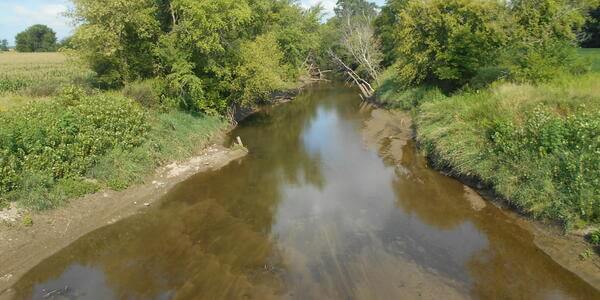In collaboration with two USGS Water Science Centers and the University of Iowa, SLSB and NWQL scientists have recently published a new research article “A comprehensive statewide spatiotemporal stream assessment of per- and polyfluoroalkyl substances (PFAS) in an agricultural region of the United States” [https://doi.org/10.1021/acs.estlett.1c00750] and an associated USGS data release [https://doi.org/10.5066/P9UJW8GL].
This is the first external publication to rely primarily on data produced by NWQL’s newly-developed PFAS method (Laboratory Code 9660), which is currently available to customers on a custom proposal basis. A total of 119 samples from 60 streams were collected, providing critical baseline data on the occurrence of 34 PFAS in surface waters from a region primarily impacted by agricultural rather than urban inputs. A previous survey of Iowa drinking water sources was limited by smaller sample size focusing on aquifers and large rivers while fewer PFAS were measured with higher reporting limits. The researchers’ ability to address the data gaps from previous studies was greatly enhanced by the development of LC 9660; likewise, the diverse set of surface water samples provided by this study led to methodological improvements to LC 9660 that will be maintained going forward.
Major findings of this research include:
- 10 different PFAS detected at 19 sites (32%)
- Highest individual PFAS concentration at site impacted by row crops with intense livestock production
- Greatest number of PFAS and highest cumulative PFAS concentration in small, effluent-impacted streams
- Focused sampling on 5.1 km reach of effluent-impacted stream suggests limited in-stream attenuation of PFAS
- Inverse relationship between PFAS concentrations and stream flow are suggestive of point-source inputs
- Exposure-activity ratio (EAR) > 0.001, a precautionary effects screening threshold, at 5 stream sites
This research has generated considerable media interest and two of the Iowa-based co-authors (Kolpin, Cwiertny) have provided interviews for the following outlets:
New study finds ‘forever chemicals’ in streams across Iowa – Iowa Capital Dispatch
‘Forever’ chemicals widespread in Northwest Iowa | Storm Lake Times

